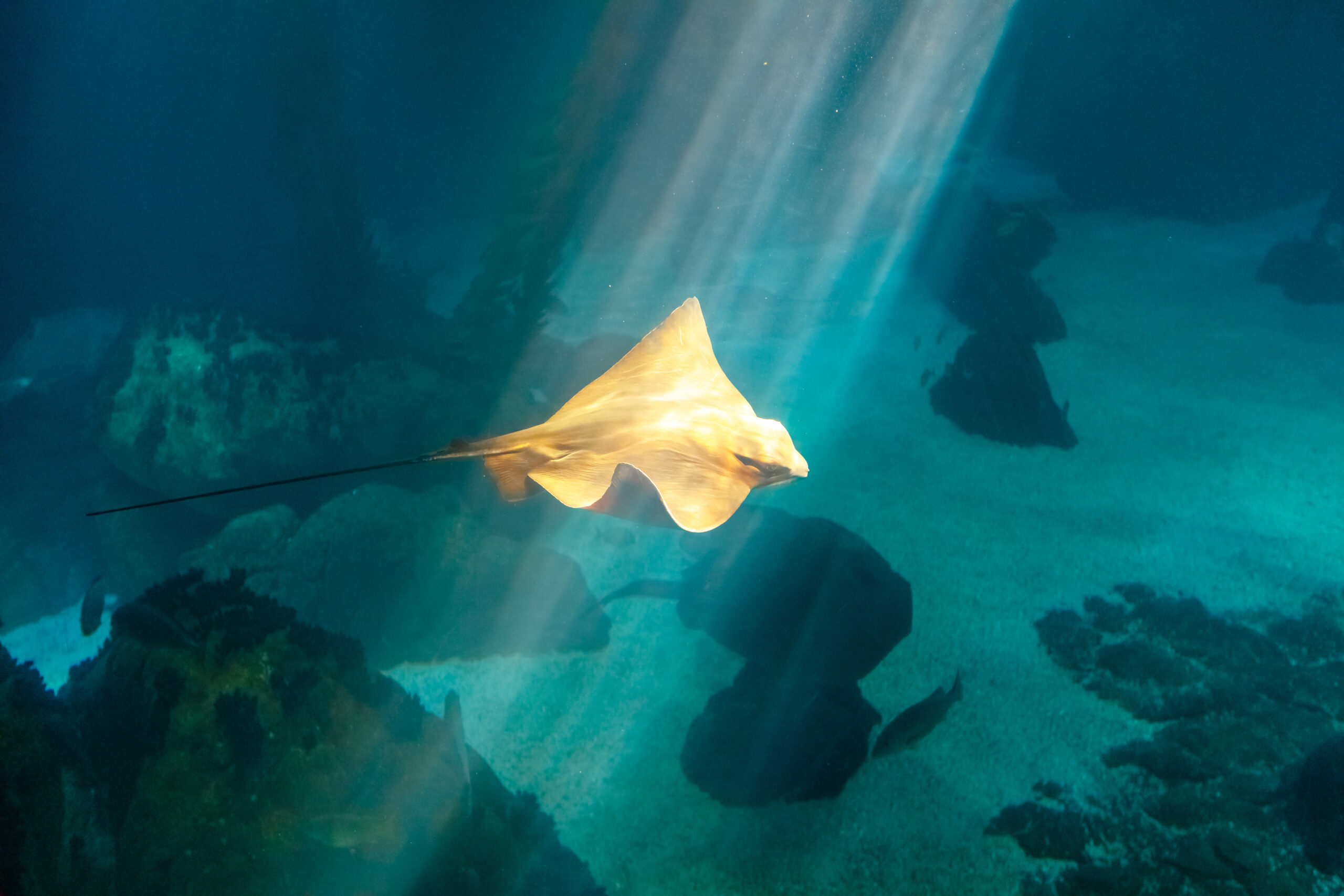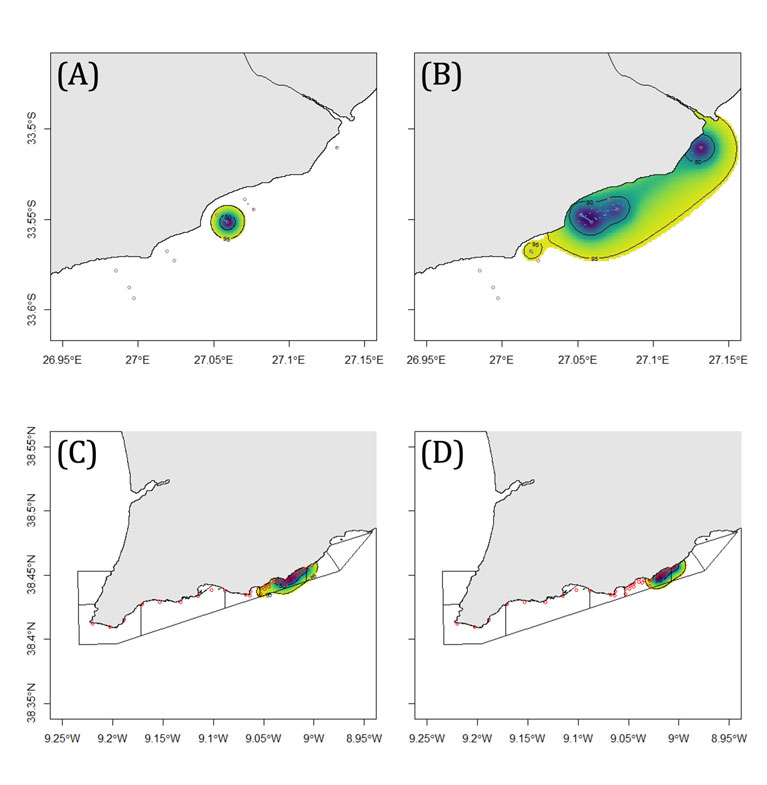Crossing continental divides

The common eagle ray. Photo © Taryn Murray
Throughout the world, some species occur only in certain locations or within the jurisdictional boundaries of specific countries, making them endemic to these places. But for every endemic species, there is an equally widespread species, occurring in several different habitats spread across various countries. One such species is the common eagle ray, Myliobatis aquila. This Critically Endangered stingray occupies inshore habitats from the eastern Atlantic, including the Mediterranean Sea to Kenya in the Western Indian Ocean, with rapid declines in abundance in both the Atlantic and Mediterranean. However, uncertainties have arisen on whether the common eagle ray is a single species, or whether there are separate temperate and tropical populations evolving because of glacial and interglaciation phases, millions of years ago. Additionally, the life history characteristics of each population differ slightly (e.g. some reach a larger size than others), and each population also faces slightly different threat levels, with the common eagle ray threatened by various coastal fisheries in numerous parts of its distribution. While extremely similar in appearance, subtle differences are also evident bringing into question there being a single widespread species. So, on top of this already complicated taxonomic situation comes significant knowledge gaps on the species in general, but also around their spatial ecology based on their movement behaviour and relative connectivity among and between different areas.

Eagle Ray, Myliobatis aquila. Photo © Benny Marty | Shutterstock
Understanding a species or a sub-population of a species’ spatial ecology can be critical in designing and implementing sound management strategies such as protected areas. Particularly, given the massive push for coastal countries to designate 30% of their marine territory as protected areas by 2030. For example, if a species such as the common eagle ray exhibits very resident behaviour that is confined to a small portion of the population’s distribution, protected areas may be a viable option to protect pockets of the species. However, if the species migrates, roaming far and wide, which is often linked to specific life-history events such as reproduction or critical foraging areas during specific seasons, setting up a network of temporally closed areas in important areas may be a better option. For this reason, we decided to explore the spatial ecology of this species using acoustic telemetry in South Africa, but fortuitously, due to ongoing collaborations with European partners at the Centro de Ciencias do Mar (CCMAR) in Portugal, we gained access to movement information of two common eagle rays which were tagged in the Professor Luiz Saldanha Marine Park in Portugal. This allowed us to investigate if there were any differences in the spatial ecology of a single species at opposite ends of its distribution, which may help the single or multiple species conundrum, but also to determine if protected areas will indeed help save this species globally, and not just in South Africa.
Our preliminary findings suggest that the species showed high tagging site fidelity in both Portugal and South Africa. However, both individuals tagged in Portugal left the acoustic array and were detected in the nearby Sado Estuary (~10 km away) during spring and summer. In South Africa, only one individual left the acoustic array and was detected in Algoa Bay ~ 100 km away from their tagging site in Kleinemonde, Eastern Cape. Given that these findings suggest that this species exhibits high levels of residency with some individuals undertaking exploratory movements, even relatively small coastal protected areas could be a valuable and viable management tool in protecting this species from future declines. The next steps of the movement component of this project is to tag additional individuals in South African protected areas to gain a greater understanding of their movements along different stretches of the coastline that are exposed to vastly different temperature regimes, and should they undertake larger roaming movements, to assess their greater connectivity in the country.

Preliminary home range estimates from two Myliobatis aquila tagged in (A, B) the Eastern Cape, South Africa, and (C, D) Portugal. Red open circles specify receiver locations and blue dots show the 60-minute centre of activity estimates used in the home range analysis. All four examples, as with all preliminary results thus far, suggest that the common eagle ray showed high tagging site fidelity in both Portugal and South Africa. Photos © Alex Winkler
